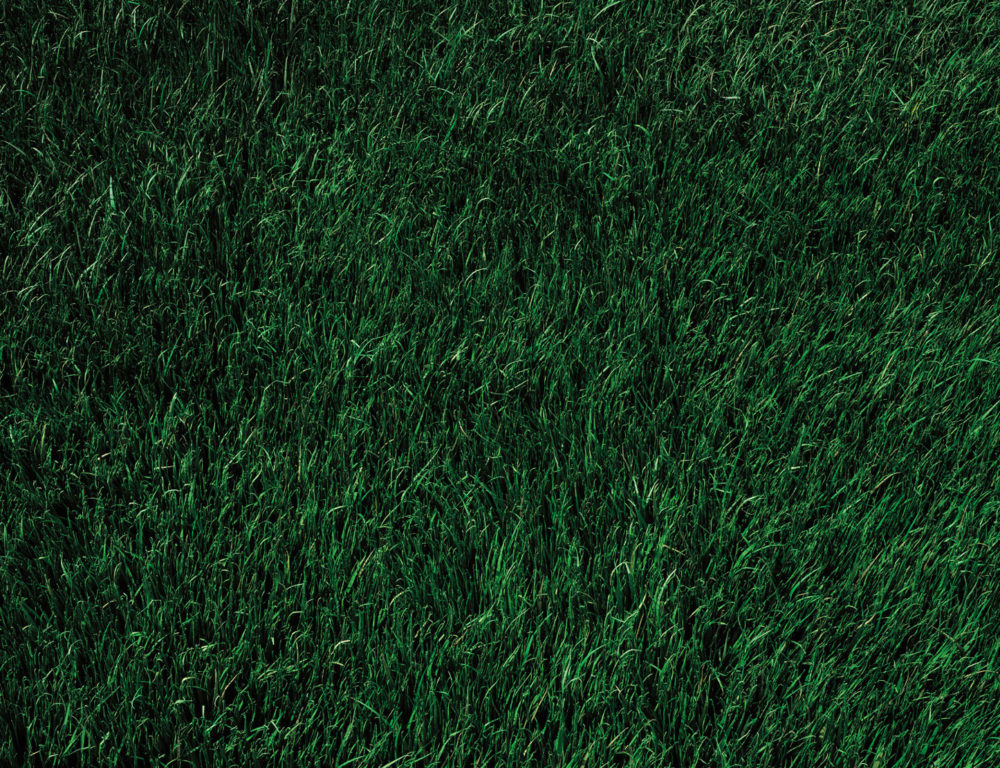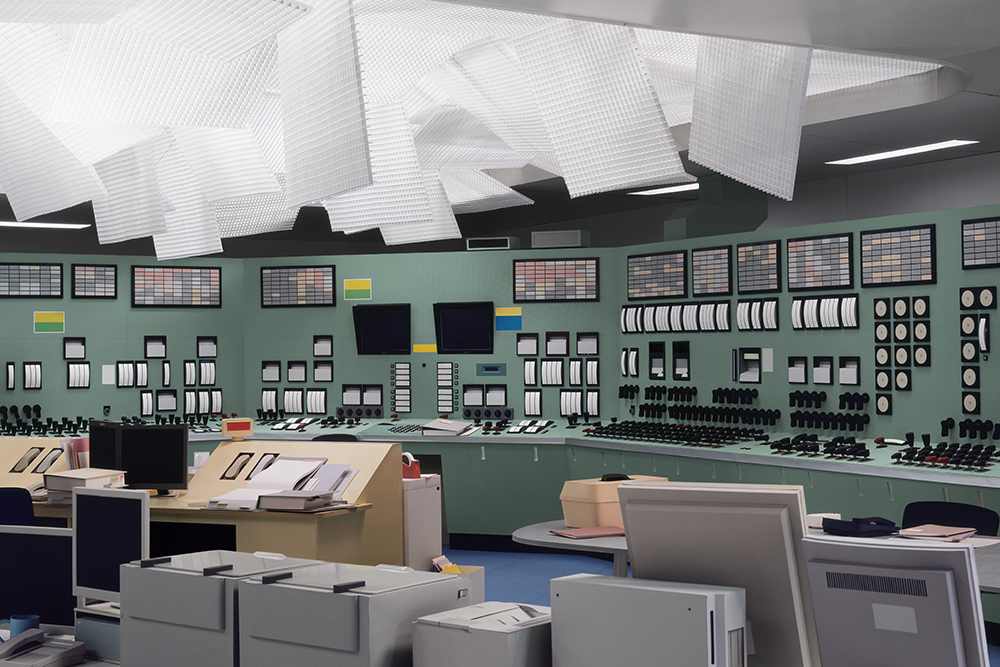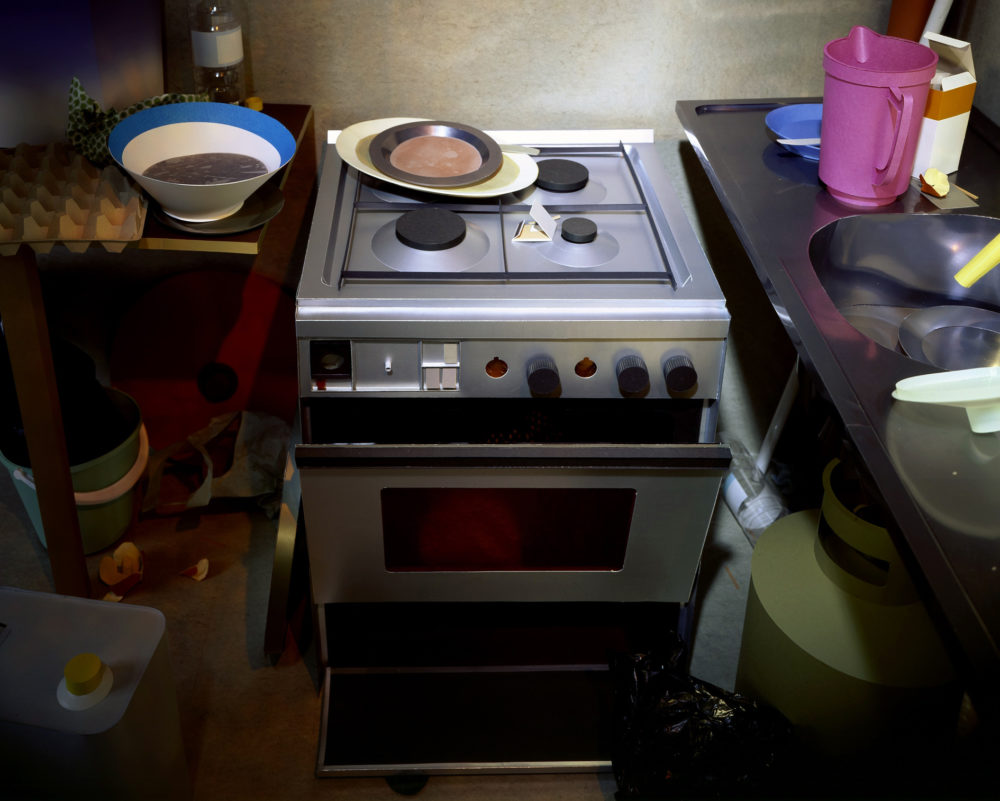Port’s Design Editor, Will Wiles, talks to the celebrated German artist Thomas Demand

The enigmatic photographs by the German artist Thomas Demand appear, at first glance, to be more documentary than art. In fact, drawn closer by the sense of the uncanny, the scenes reveal themselves to be composed of incredibly detailed paper and card models, painstakingly made by the artist. Favouring bureaucratic and banal spaces that are often connected to dark events – subjects include the ransacked offices of the East German secret police, Saddam Hussein’s kitchen and, above, the control room of the nuclear power plant at Fukushima – the images question the nature of experience and memory, and, in Demand’s own words, “our need to make sense of the chaotic environment we are in”.
A few of his pieces are ‘outdoors’ – one of the most memorable being no more than a patch of lawn, rendered in staggering detail, with each blade of grass carefully and convincingly created – but most are of interiors. His work is a sinister enfilade: a succession of quiet, unpeopled rooms. In some, something terrible has clearly happened. In others, it may be about to. “These spaces more condensed and focused,” says Demand.
It’s an interest that connects to a recurring presence in his work – the ghostly afterimage of the Cold War and the division of Germany. “In the West since the Second World War, most of the places of power were inside a room, whereas the East tended to perform in a public realm, like parades and open-air speeches. This is not a general rule, but it seems notable nevertheless.”
And there has to be a degree of secrecy, or at least privacy and obscurity, to the scenes he chooses. Some scenes “are so iconic that I don’t see much that could be added: all has been shown. I like the less obvious, mundane, the generic and probably accidental attention to the built environment much more. It is closer to one’s own experiences.”

Reconstructing a scene in meticulous detail, and then taking an image of it, is a process that has obvious affinity to the making and handling of memory. “Memory is a construction,” Demand says. “No one has images in their head. When we talk about the downfall of Saddam Hussein, your brain assembles all the parts necessary for your imagination. Your brain provides you with that, to enable you to take part in a social practice, communication… That’s when it gets interesting for me. Not the incident, but the way in which we speak about it.”
Do particular scenes ever appeal simply as a model-making challenge? “Certainly,” he says, “but I try to avoid any hint of artistry; it would be challenging in a philosophical sense. Making a piece of lawn will take five months, but anyone could do it if they have the patience. The time spent on something like ‘Lawn’ has a Beckettian, absurdist meaning to it. That’s where it opens up to give an idea a form, which the visual arts should be aiming for.”
Demand seems most at home in a particular kind of bureaucratic environment: the office, the control room, the backrooms of power and decision-making. He admits to a kind of perverse enjoyment that these are spaces of paperwork: “A paradoxical barn door for me”. Here, it might be possible to discern a comment on the passage from an analogue, modern 20th century, in which we still believed that information could be tamed and mastered, into a digital, postmodern 21st century in which information endlessly proliferates. The latter is an era of over-memory, in which machines hoover up every datum of our lives and then never forget it, but also an age under permanent threat from data-loss, and the corruption and blanking of such archives. He gently denies any desire to ‘illustrate’ in that way. “I believe an artist will work alongside the issues which a society identifies in retrospect as significant,” he says. “The artist cannot produce them, but they will show up in a work which is of any relevance.
“However, how many telephone numbers do you remember? Three? Four? You don’t have to memorise them as they are in your smart phone, which you always carry around with you. We immediately blank out all such unessential information to make space for all the really important things, like Kim Kardashian’s Twitter feed. So in the end it’s not the ‘over-memory era’ but the ‘age of the cancerous archive’. We are losing more memory than ever before.”

Demand prefers to call the dioramas he creates ‘sculptures’ rather than ‘models’, but their existence is only temporary. Once it has been properly photographed, resulting in that one, perfect shot, the card and paper construction is destroyed – the photograph is the work of art. Though this might feel like a waste, it’s a necessary part of the process, both for the questions Demand wants to ask about memory, and for more prosaic reasons.
“I need the space again, so it has to go,” he explains, though he allows himself some room for sentiment. “I tend to avoid doing it: if you spend months on something, you become friends with it, so I have assistants that take it down. Usually it only takes 20 minutes.”
This is an extended version of an article from issue 21 of Port, out now. To buy or subscribe, click here.